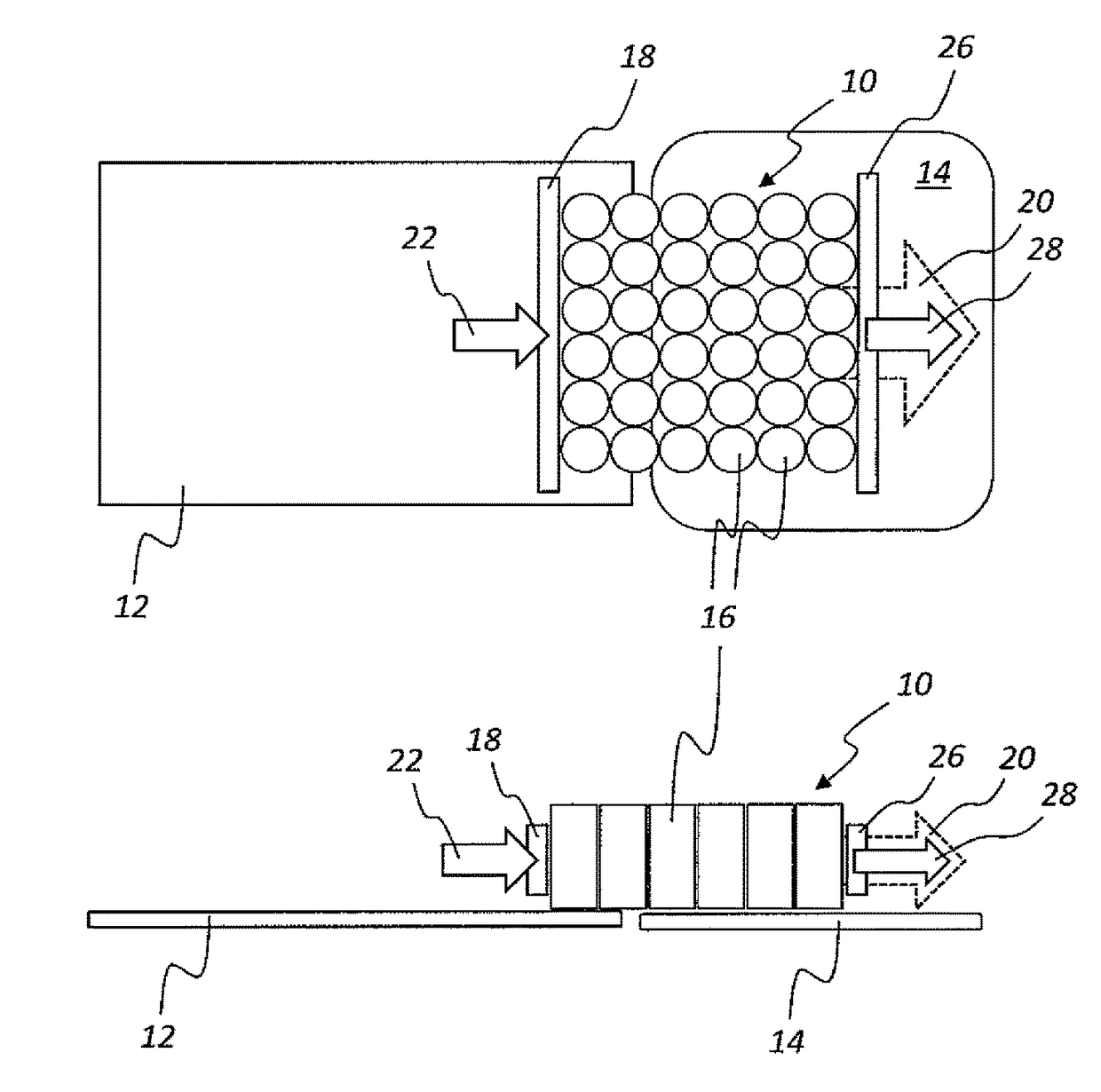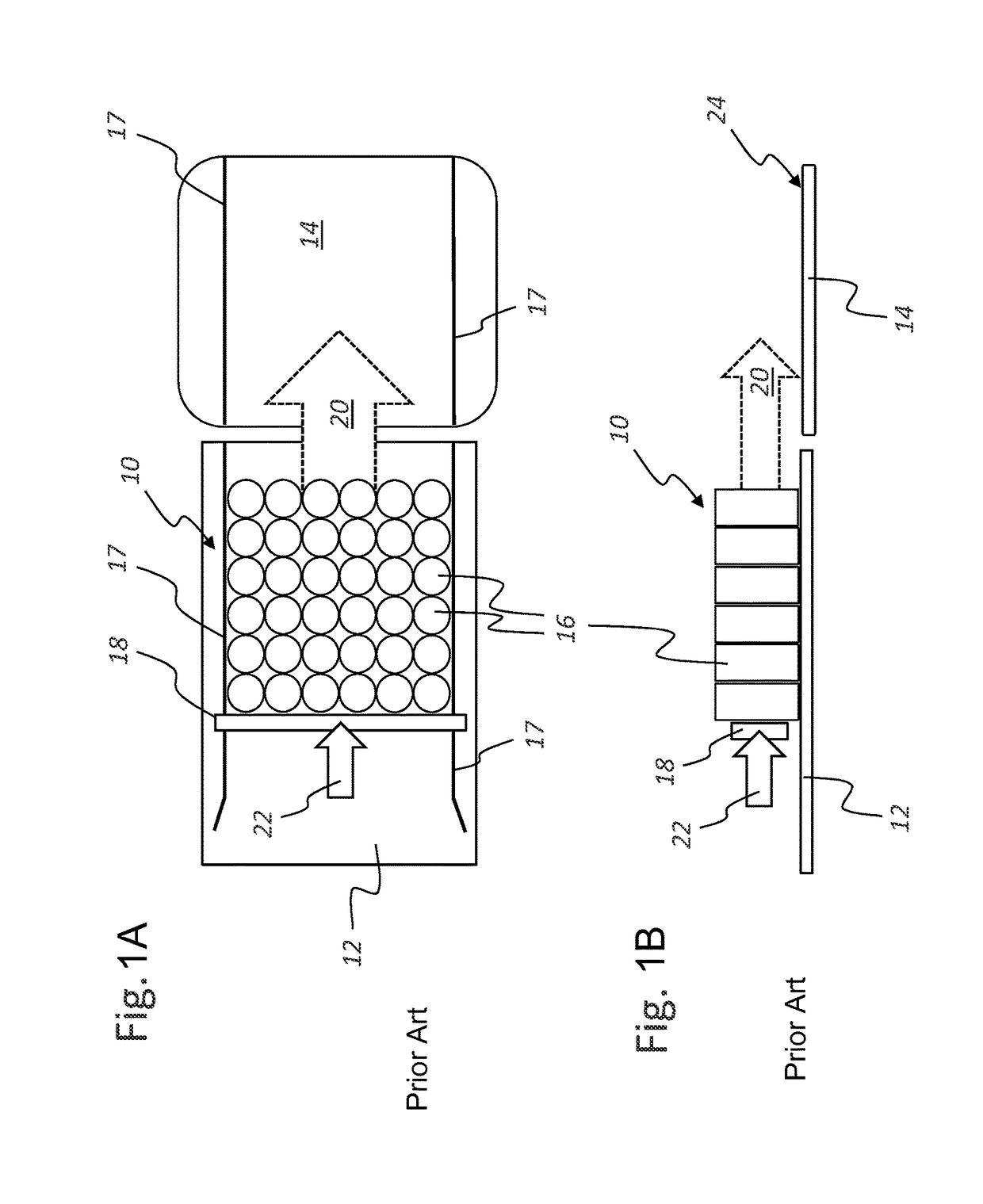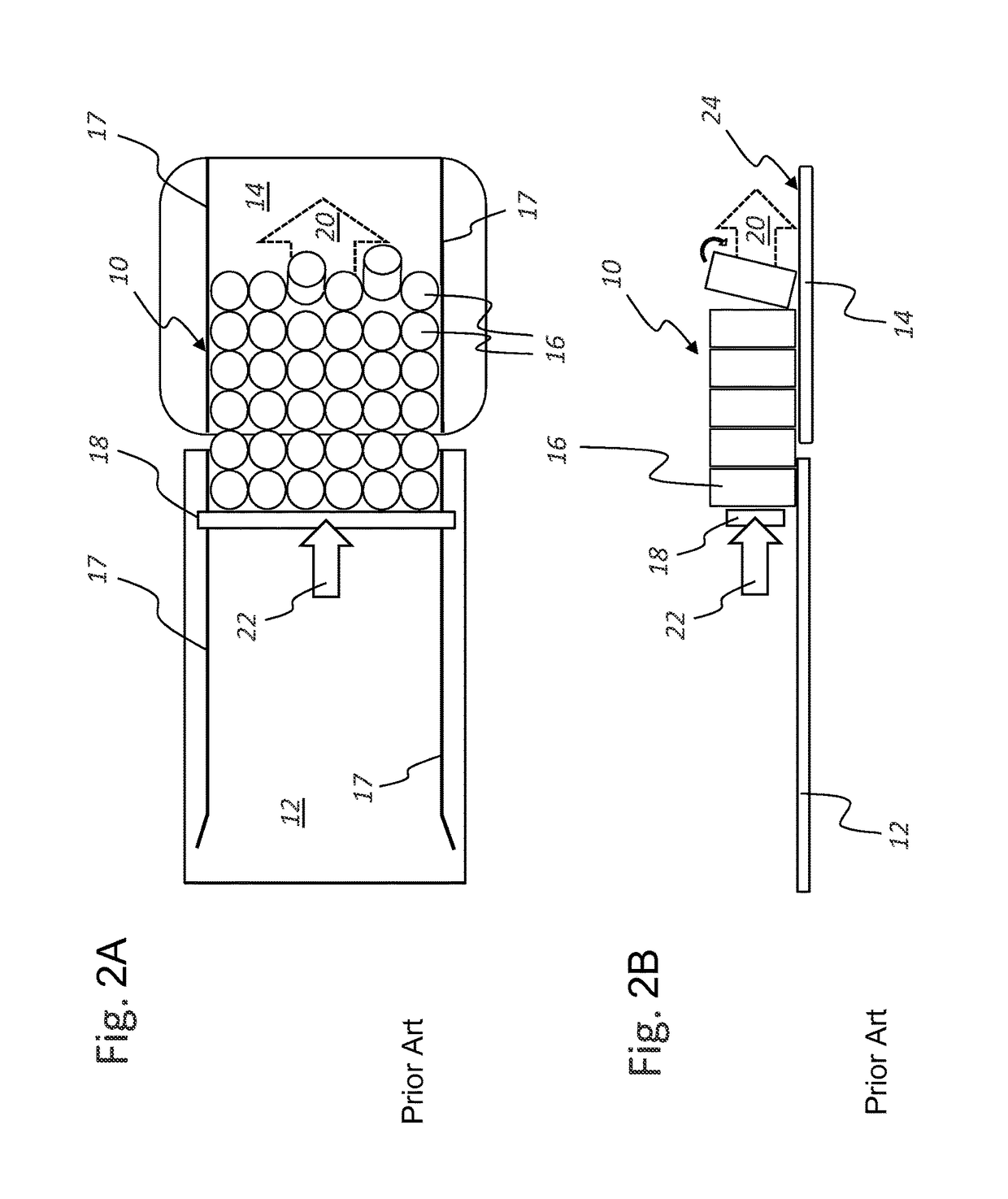Method and apparatus for transferring article layers between adjacent modules
a technology for transferring article layers and adjacent modules, which is applied in the direction of de-stacking articles, mechanical conveyors, packaging, etc., can solve the problems of individual articles falling, affecting the safety of the article, and the risk of toppling or becoming dislodged the highest, and the risk of falling over or becoming dislodged the greates
- Summary
- Abstract
- Description
- Claims
- Application Information
AI Technical Summary
Benefits of technology
Problems solved by technology
Method used
Image
Examples
Embodiment Construction
[0035]The same or equivalent elements of the invention are designated by identical reference characters. Furthermore and for the sake of clarity, only the reference characters relevant for describing the respective figure are provided. It should be understood that the detailed description and specific examples of the device and method according to the invention, while indicating preferred embodiments, are intended for purposes of illustration only and are not intended to limit the scope of the invention.
[0036]In a schematic top view (FIG. 1A) and a schematic side view (FIG. 1B), the illustrations in FIG. 1 show an article group or article layer 10 being horizontally shifted from a first position on a first module 12, for instance on a grouping table, which can be a part of a grouping system, to a second position on a second module 14, which can be, for instance, a lifting module or a loading station or the like. The article layer 10 shown here in the depicted exemplary embodiment co...
PUM
 Login to View More
Login to View More Abstract
Description
Claims
Application Information
 Login to View More
Login to View More - R&D
- Intellectual Property
- Life Sciences
- Materials
- Tech Scout
- Unparalleled Data Quality
- Higher Quality Content
- 60% Fewer Hallucinations
Browse by: Latest US Patents, China's latest patents, Technical Efficacy Thesaurus, Application Domain, Technology Topic, Popular Technical Reports.
© 2025 PatSnap. All rights reserved.Legal|Privacy policy|Modern Slavery Act Transparency Statement|Sitemap|About US| Contact US: help@patsnap.com



